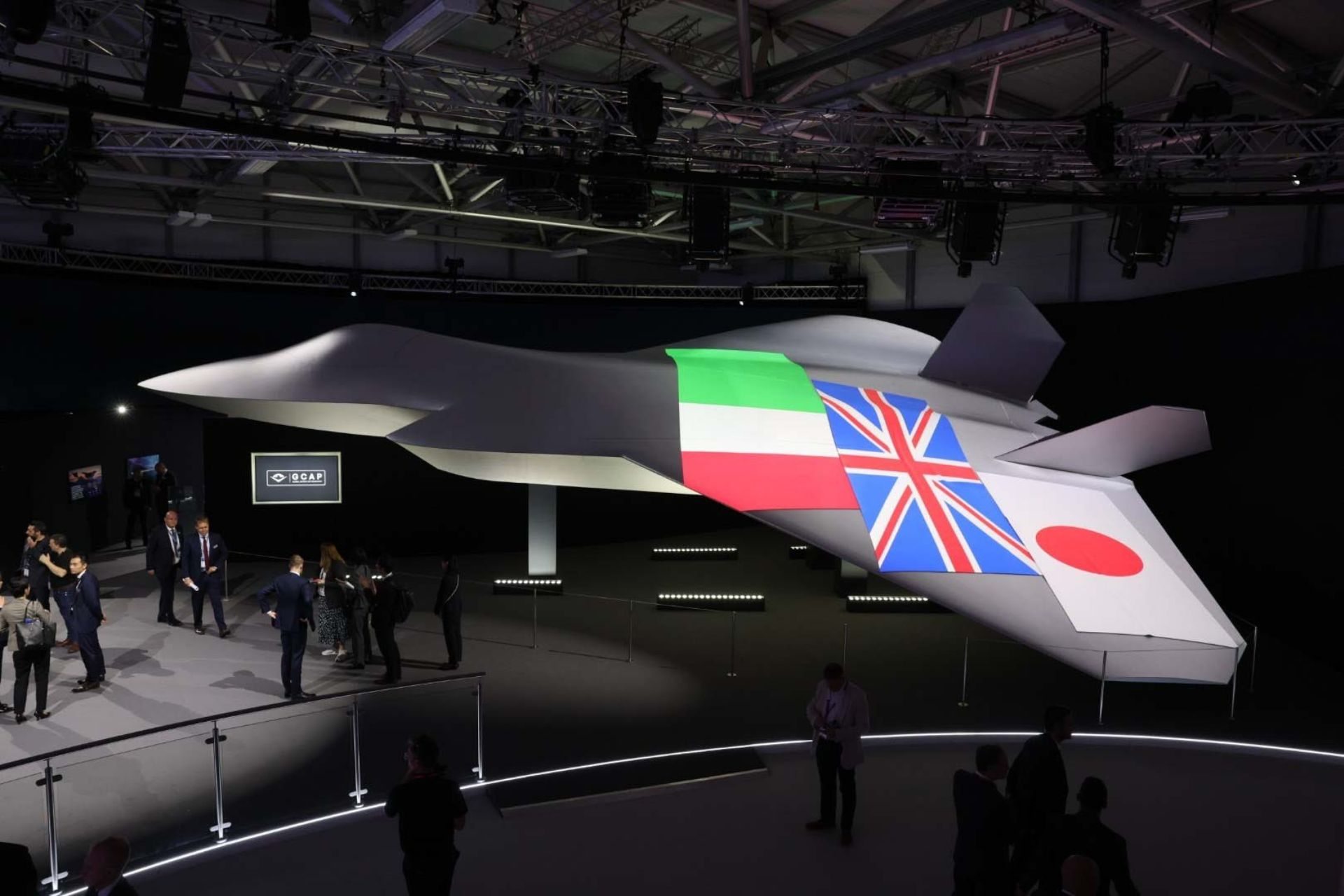Italy Announces Saudi Arabia May Join 6th-Generation GCAP Fighter Jet Program

{loadposition bannertop}
{loadposition sidebarpub}
The Global Combat Air Programme (GCAP), a strategic collaboration between Italy, the United Kingdom, and Japan to develop a sixth-generation stealth fighter jet, may soon include a key new partner: Saudi Arabia. Italian Foreign Minister Antonio Tajani reportedly confirmed this possibility in a statement cited by Reuters on November 27, 2024.
Follow Army Recognition on Google News at this link
Saudi Arabia’s potential entry into GCAP could transform it into a truly global initiative, aligning with its ambition to lead defense innovation (Picture source: GCAP)
This announcement comes as both GCAP and its main competitor, the Future Combat Air System (FCAS) program—led by Germany, France, and Spain—are seeking to expand their respective partnerships. While FCAS already benefits from Belgium’s participation, Saudi Arabia’s inclusion in GCAP could significantly bolster the program’s industrial and strategic positioning.
Launched in December 2022, GCAP unites the efforts of the United Kingdom (Tempest project), Japan (FX program), and Italy to develop an advanced fighter jet designed to replace the current fleets of Eurofighter Typhoon and Mitsubishi F-2 aircraft by 2035. The program aims not only to produce a next-generation aircraft but also to address growing threats from countries such as China and Russia while driving technological innovation and strengthening the defense industries of the partner nations. Key contributors to the program include leading companies such as BAE Systems, Mitsubishi Heavy Industries, and Leonardo.
The addition of Saudi Arabia to GCAP would bring several advantages. Riyadh could provide substantial financial resources crucial for a project of this scale, which is estimated to cost tens of billions of dollars, while offering access to one of the most lucrative markets for advanced fighter jets. Furthermore, this partnership could strengthen diplomatic and strategic ties between Saudi Arabia and the current GCAP members, while also supporting the development of Saudi Arabia’s domestic defense industry.
However, the expansion may also present challenges. Managing divergent interests among the current and prospective partners could complicate the project’s governance. Additionally, political considerations, including Western criticism of Saudi Arabia’s regional activities, could provoke debates within the program’s framework.
For Japan, GCAP represents a unique strategic opportunity. Since World War II, Japan has relied heavily on U.S. technology for its combat aircraft. This project signals a significant shift, reinforcing its technological autonomy while deepening its alliances with European partners.
Saudi Arabia’s potential entry into GCAP could transform it into a truly global initiative, aligning with its ambition to lead defense innovation. If confirmed, this expansion would not only deliver significant economic and industrial benefits but also reshape the strategic dynamics within international defense partnerships. Success, however, will hinge on the ability of all stakeholders to navigate the complexities of such a diverse collaboration.

{loadposition bannertop}
{loadposition sidebarpub}
The Global Combat Air Programme (GCAP), a strategic collaboration between Italy, the United Kingdom, and Japan to develop a sixth-generation stealth fighter jet, may soon include a key new partner: Saudi Arabia. Italian Foreign Minister Antonio Tajani reportedly confirmed this possibility in a statement cited by Reuters on November 27, 2024.
Saudi Arabia’s potential entry into GCAP could transform it into a truly global initiative, aligning with its ambition to lead defense innovation (Picture source: GCAP)
This announcement comes as both GCAP and its main competitor, the Future Combat Air System (FCAS) program—led by Germany, France, and Spain—are seeking to expand their respective partnerships. While FCAS already benefits from Belgium’s participation, Saudi Arabia’s inclusion in GCAP could significantly bolster the program’s industrial and strategic positioning.
Launched in December 2022, GCAP unites the efforts of the United Kingdom (Tempest project), Japan (FX program), and Italy to develop an advanced fighter jet designed to replace the current fleets of Eurofighter Typhoon and Mitsubishi F-2 aircraft by 2035. The program aims not only to produce a next-generation aircraft but also to address growing threats from countries such as China and Russia while driving technological innovation and strengthening the defense industries of the partner nations. Key contributors to the program include leading companies such as BAE Systems, Mitsubishi Heavy Industries, and Leonardo.
The addition of Saudi Arabia to GCAP would bring several advantages. Riyadh could provide substantial financial resources crucial for a project of this scale, which is estimated to cost tens of billions of dollars, while offering access to one of the most lucrative markets for advanced fighter jets. Furthermore, this partnership could strengthen diplomatic and strategic ties between Saudi Arabia and the current GCAP members, while also supporting the development of Saudi Arabia’s domestic defense industry.
However, the expansion may also present challenges. Managing divergent interests among the current and prospective partners could complicate the project’s governance. Additionally, political considerations, including Western criticism of Saudi Arabia’s regional activities, could provoke debates within the program’s framework.
For Japan, GCAP represents a unique strategic opportunity. Since World War II, Japan has relied heavily on U.S. technology for its combat aircraft. This project signals a significant shift, reinforcing its technological autonomy while deepening its alliances with European partners.
Saudi Arabia’s potential entry into GCAP could transform it into a truly global initiative, aligning with its ambition to lead defense innovation. If confirmed, this expansion would not only deliver significant economic and industrial benefits but also reshape the strategic dynamics within international defense partnerships. Success, however, will hinge on the ability of all stakeholders to navigate the complexities of such a diverse collaboration.





